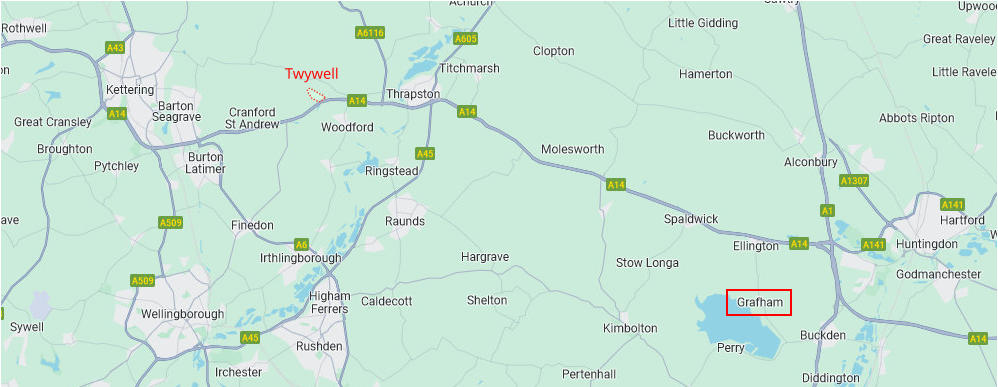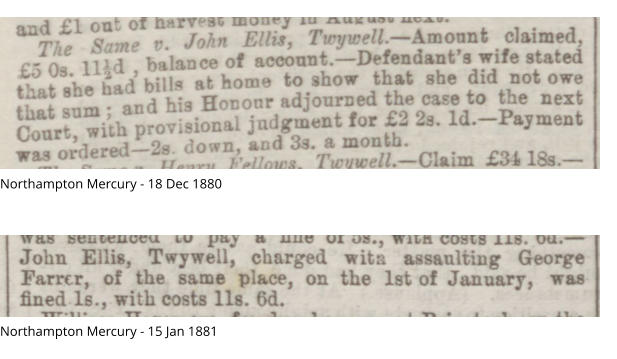John Ellis (1856 - 1922)
John Ellis was born in the fourth quarter of 1856 in Graffham or Grafham, Huntingdonshire. He was one of at least eight children born to Joseph Ellis,
an agricultural labourer, and his wife Elizabeth.
John was living with his family in the 1861 and 1871 Censuses.
In the fourth quarter of 1875, at the age of 18, he married Mary Ann Pratt in Thrapston, Northamptonshire. She was one of a large family from
Twywell, Thrapston. Her parents were Brittain Pratt (a blacksmith) and Mary Pratt née Farrer or Farrow.
Twywell is an English village and civil parish in the county of Northamptonshire. Twywell Hills and Dales Country Park is adjacent. It lies just to the north of the
A14 road, about three miles (5 km) west of Thrapston, and forms part of North Northamptonshire. Twywell is about 15 miles north-west of Grafham.
The name "Twywell" derives from two Old English words meaning two springs or streams. Twywell is recorded in the Domesday Book as Twowelle but can be
dated back to the Iron Age.
Iron ore was quarried in the area at various times between the 1880s and 1974. Some of the quarries also obtained clay for brick making in the early days and
a limestone quarry operated between 1917 and 1943. The quarries which started first were on the east side of the village and gradually worked their way
northwards. They were small-scale workings and it is not clear when they began. However, it is known that they were in operation by 1884. There was also a
brick works; closed by 1892. The ore was taken to the railway east of Twywell Station by a cable-worked tramway of an unknown gauge (possibly 4 foot or 2
foot). The quarries reopened in 1906 and used a new tramway with a similar route and a 2ft 3inch gauge, also cable-worked. The building which housed the
stationary steam engine which operated the cable was still visible in 1979. A steam digger was in use by 1923 and at that time a steam locomotive worked in
part of the quarry. The locomotive was of German manufacture, possibly provided by Germany as part of the reparations for World War I. However, production
ceased in 1923 and did not begin again until 1963. Most of this later quarrying was to the north of the village and the ore was taken away by lorry. At this time it
was sent to Hartlepool and Middlesbrough for smelting. The quarries were smoothed over, but iron-ore sand was obtained between 1971 and 1977.
As only one John Ellis is to be found in the 1881 Census
in Twywell it seems more than likely that these
newspaper cuttings refer to ‘our’ John Ellis.
In view of the fact that John’s mother-in-law’s maiden
name was Farrer or Farrow, there’s a possibiity that
George Farrer was a relation.









